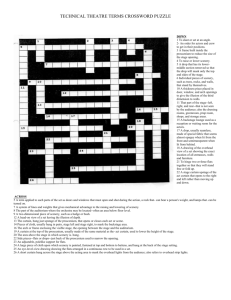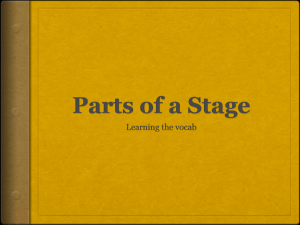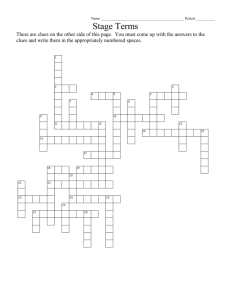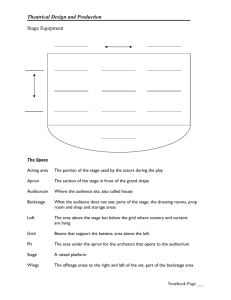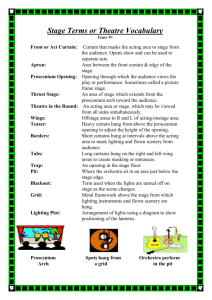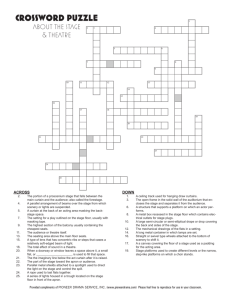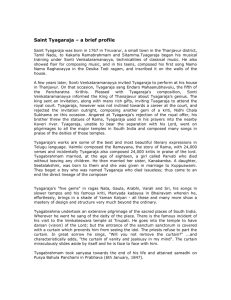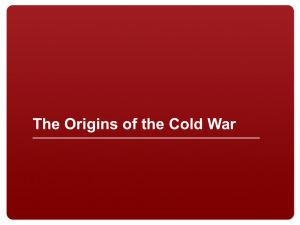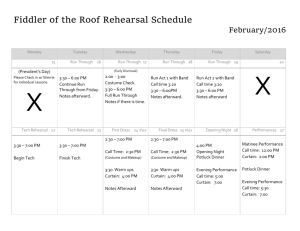The Stage
advertisement
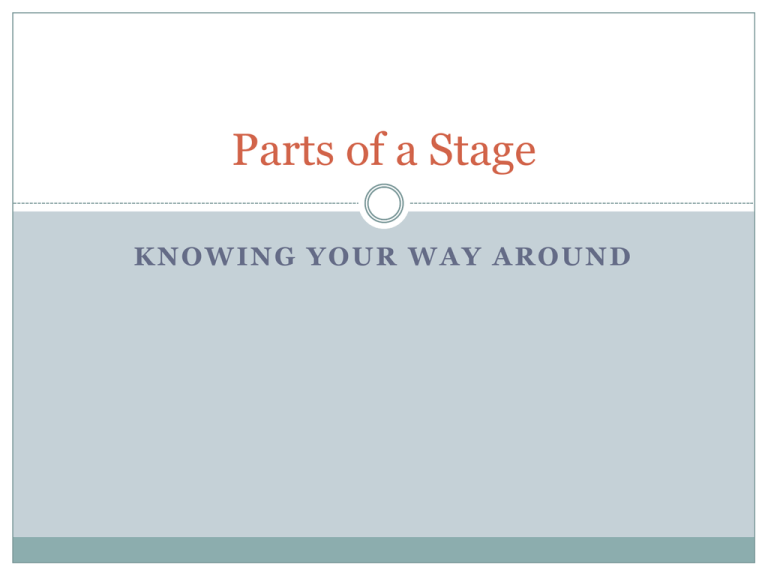
Parts of a Stage KNOWING YOUR WAY AROUND Grand Drape Curtain that masks the acting area from the Audience. The front curtain is opened at the beginning of the play and closed between acts or scenes. It is usually a drawn curtain that parts in the middle. Sometimes called the Main Curtain or Grand Drape, it is usually a very nice, attractive material. Curtain Line The line marking the position of the curtain when closed. Apron Narrow acting area between the front edge of the stage and the front curtain. (Curtain Line) (Curtain Line) (Audience) Proscenium Arch “Picture frame” for the opening of the stage Grand Teaser Heavy curtain or canvas-covered wooden frame hung above the proscenium opening to adjust the height of the opening Helps mask (hide) lighting instruments Grand Tormentors A set of curtains, usually the same color as the grand drape used to regulate the width of the proscenium opening Traveler A stage curtain that closes all the way giving a neutral black background. Legs Drapes hung in pairs, stage right and left, behind the tormentors to mask (hide) the backstage Borders Short curtains hung at intervals above the acting area to mask (hide) lights and scenery from the audience Cyclorama (Cyc) Background curtain covering stage back and sides. Usually, it curves around the sides a little. It is often used for special lighting effects Scrim A drop made of fabric that seems almost opaque when lit from the front and semi-transparent when lit from behind. SCRIM Battens Long pipes from which curtains, lights, or flats are hung Electrical A pipe suspended about the stage, equipped with outlets for lighting instruments. Flat A canvas covered wooden frame used for scenery Storage Loft An area used to store flats, door units, or other pieces of scenery. Flies Area above stage where scenery is hung out of view Fly To raise or lower scenery Line Each individual batten that can be raised or lowered Pinrail A rail on the fly gallery wall. The area from which the flies are operated. Counter-Weight System A system of lines and weights that gives mechanical advantage to raising or lowering Gridiron (Grid) Framework of beams above the stage; supports riggings for flying scenery Lighting Bay Where the stage lights are stored above the audience . Trap Opening in the stage floor Wings The wings are a part of the stage deck but offstage out of sight of the audience. The wings are usually masked by legs. This is the area where an actor waits before making their entrance. House The house is where the audience is seated. Orchestra The first level of seating in all auditoriums. Mezzanine The second level of seating in a three-seating level auditorium. Balcony The third level of seating in a three-seating level auditorium. Petite Balcony The fourth level of seating in a huge theatre with four levels. Call Board A Backstage bulletin board that contains important information for the cast. It also will contain a sign-in sheet for when cast member arrive for rehearsals. Green Room A waiting area offstage for actors to sit. Dressing Room Small rooms offstage where actors get into costume and apply makeup. Assignment Go on an online Scavenger Hunt and find an example of each of the things we talked about today. Put it in a power point with the name of the picture at the top of the slide! Parts of the Stage / Acting Areas Adapted from textbook pages 154-156 (“Acting Areas”), Figures 9-6 & 9-7 BACKSTAGE UR (Upstage Right) (Curtain) UC (Upstage Center) UL (Upstage Left) OFFSTAGE OFFSTAGE R (Stage Right Center) DR (Downstage Right) C (Center Stage) DC (Downstage Center) (Curtain Line) Apron (Audience) L (Stage Left Center) DL (Downstage Left) (Proscenium Line)
